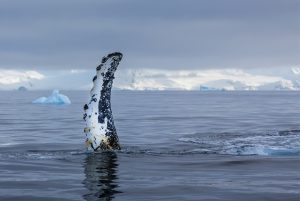Antarctica is stunningly beautiful, with surreal landscapes of ice and rock, and unique wildlife, but the price of admission includes crossing the Drake Passage, the stretch of water that divides the continent from South America. Ocean currents and winds flow freely around the Southern Ocean, mostly unhindered by land. The Drake is the narrowest point that all this wind and water must funnel through, and it is prone to frequent wicked storms as well.
It takes about two and a half days to cross the passage, and if you are lucky, it will be almost flat calm — the “Drake Lake.” However, in my experience, having crossed the passage eight times now, you are more likely to encounter the “Drake Shake” as the swell and winds rock the boat. On our way south, we encountered the shake, with winds blowing at Beaufort 9, a “strong/severe gale” (0 being calm as glass, and 12 being hurricane-force winds).
On the return crossing, we sailed into a mighty Beaufort 11 “violent storm” that brought with it 11-metre waves and near hurricane-force winds. I called this the “Drake Quake” as the waves slamming against the sides of the ship felt like a series of earthquakes. I don’t have very good sea legs, and it was amazing to me how the staff and crew were still able to serve meals, carry on with cabin housekeeping, and generally keep things running smoothly. Admittedly, I was hit by the “mal-de-mer,” but once the storm calmed down and we got into the more protected Beagle Channel, everything returned to normal, and we all were able to brag about having braved the mighty Drake Passage!















